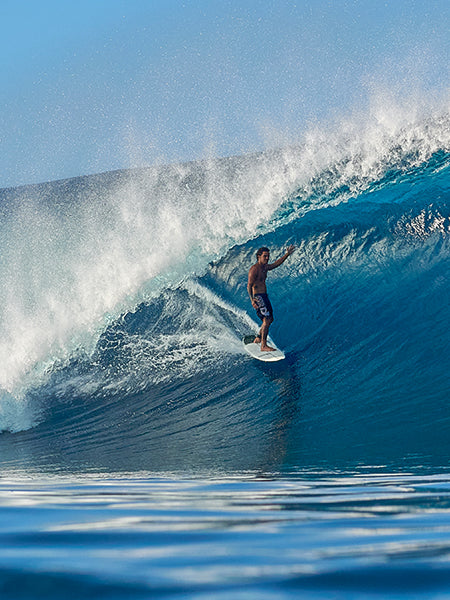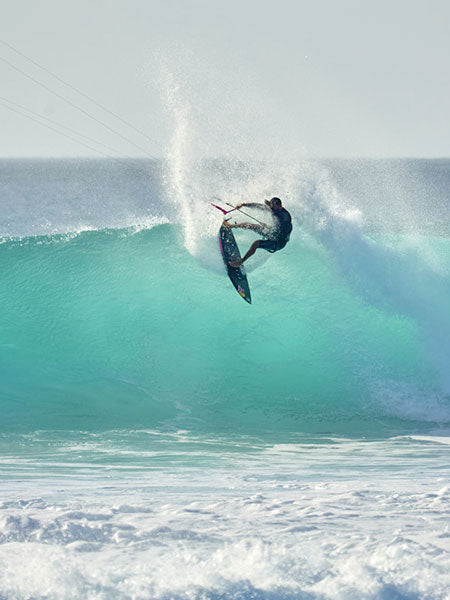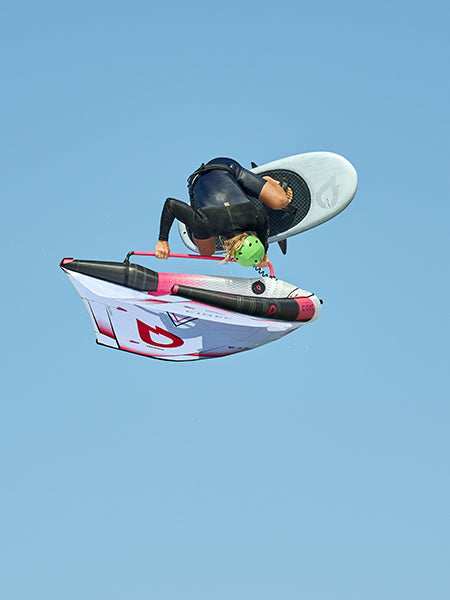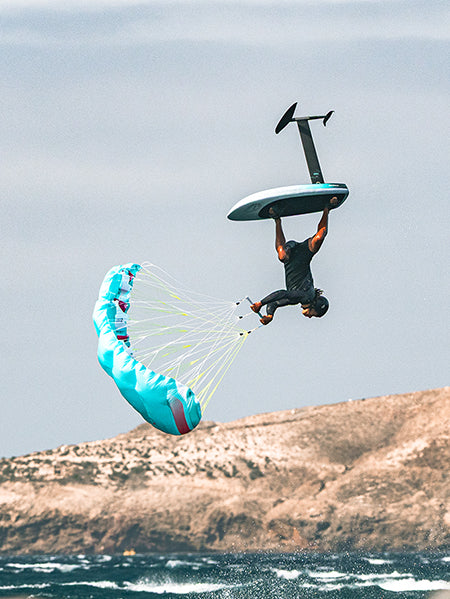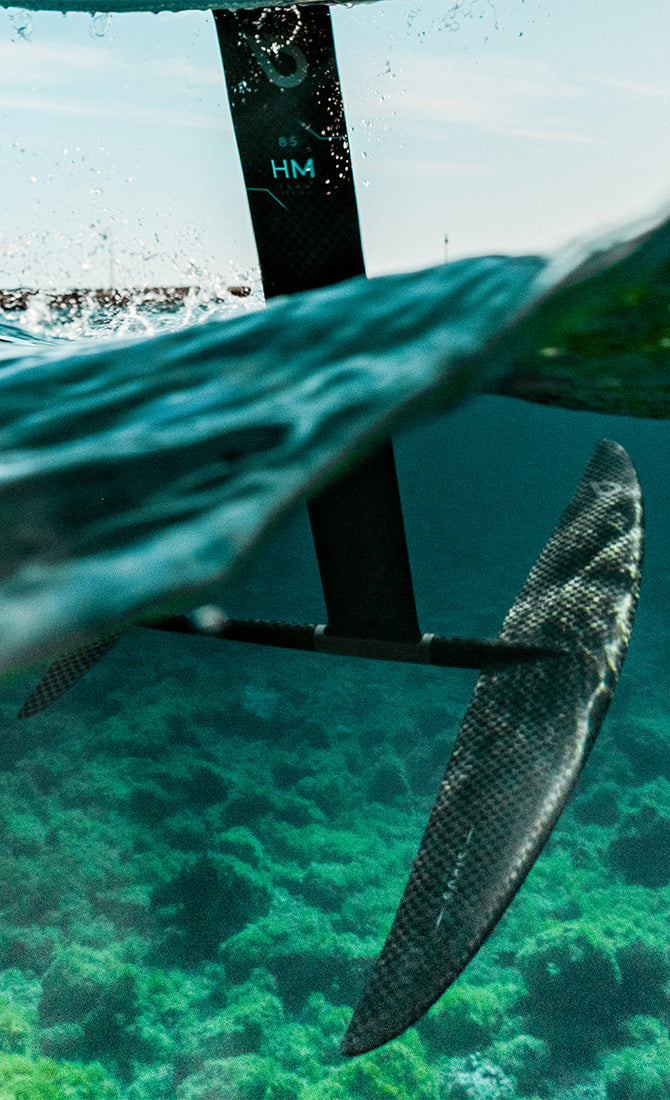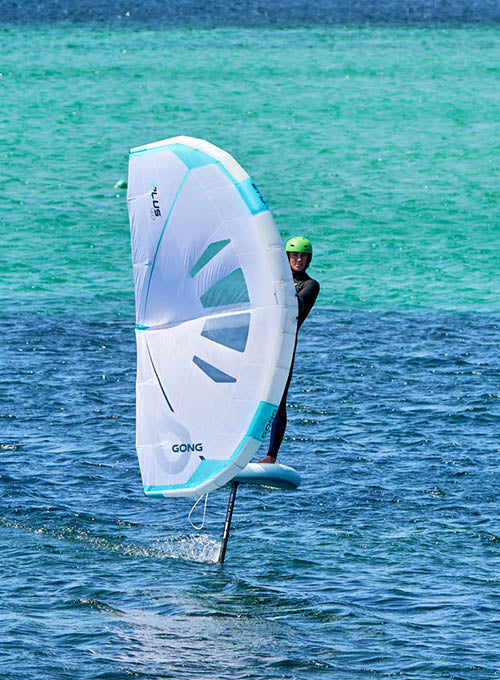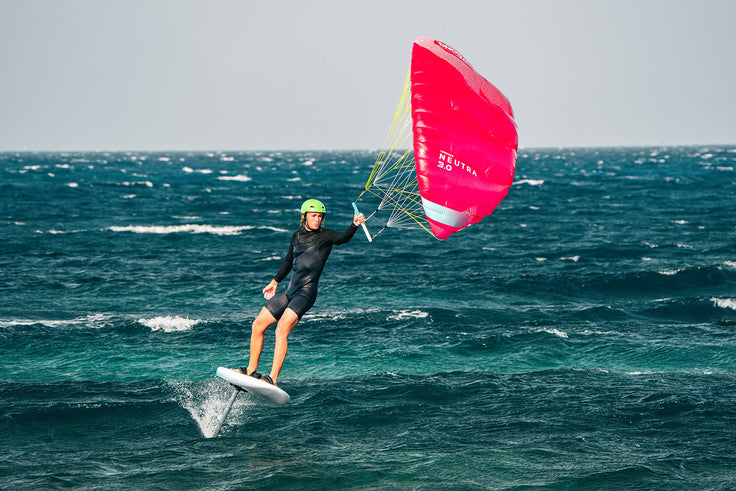Tack with a lowkite
Learn the must-have maneuver for changing tack
The tack is one of the basic maneuvers every rider needs in their repertoire. It’s used constantly in lowkite or parawing sessions, whether to go upwind, to escape a closing wave, or to turn around in light wind conditions. There’s no shortage of situations where you’ll need it! Here’s how to master it.
 Foiler: Mathieu, GONG team rider, on a Cruzader FSP Pro, Lowkite Plus, HM mast, and Veloce foil.
Foiler: Mathieu, GONG team rider, on a Cruzader FSP Pro, Lowkite Plus, HM mast, and Veloce foil.
How to perform a tack in lowkite
The tack is a change of tack by turning upwind, which requires good speed control to cross the wind axis. A smooth, gliding execution is essential to exit the maneuver still flying and with full flow.
Here’s a step-by-step guide:
-
Build up speed while riding across the wind.
-
Start carving upwind in a gradually tightening arc. Smoothly, to avoid losing speed. Turn your head toward the wind and press on your heels (if riding heelside) or toes (if riding toeside).
-
As you gradually point into the wind, let the lowkite rise above you by easing off the brake. To increase mobility, release one hand and control the front of the bar with the other, whichever hand feels most natural depending on your stance (heelside or toeside).
-
Once you’re facing directly into the wind, quickly tilt the lowkite in the opposite direction and toward the middle of the wind window. At the same time, pivot your weight in the same direction to close your turn and send the board’s nose toward its new heading.
-
The transition happens fast. The lowkite catches the wind again in the center of the window as you place your second hand back on the bar for better control.
-
Keep steady tension in the lowkite to pick up speed again.
In light wind, tacking is actually easier than jibing, because you can maintain better line tension throughout the turn. As Patrice demonstrates in this session with a 5 m² Plus wing in 6–10 knots.
